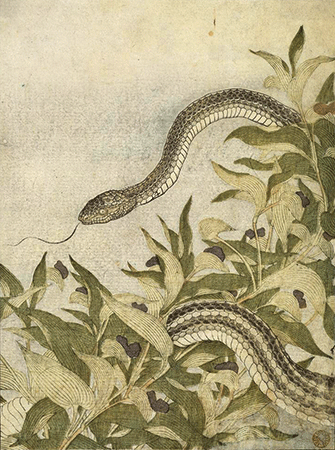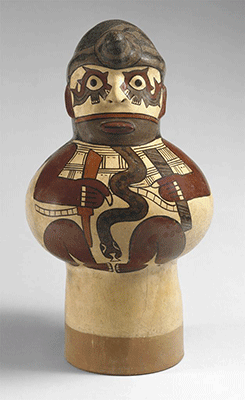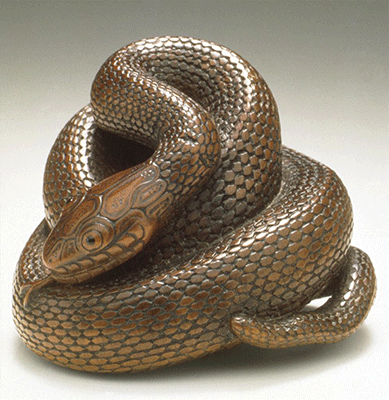Happy Chinese New Year – Year of the Snake!

Kitagawa Utamaro | Rat Snake with Dayflower Plant | January 1788 | Image © The Metropolitan Museum of Art
Happy Lunar New Year! The Chinese Year of the Snake begins February 10, 2013 and lasts through January 30, 2014.
The traditional Chinese calendar is based on a combination of lunar and solar movements; the year begins with the night of the first new moon of the lunar New Year and ends on the 15th day. The Chinese zodiac follows a 12-year cycle that relates each year to an animal and its attributes. People born under the snake sign are considered wise, thoughtful, and calculating (although the negative connotations of the snake also present some problems, according to this article in the Wall Street Journal).
We’ve put together a slide show of highlights from the ARTstor Digital Library. As you can see, the snake plays important roles in cultures, myths, and religions across the world, from the Bible’s serpent in the Garden of Eden to Mesoamerica’s feathered serpent and the Hindu Nag Panchami festival in which participants worship cobras.
- Minoan | Figure of snake goddess | 1700-1400 BCE | Image and original data provided by Erich Lessing Culture and Fine Arts Archives/ART RESOURCE, N.Y.; artres.com
- Peru; Nasca | Drum | 1st century | Image © The Metropolitan Museum of Art
- Mexico, south-central region, state of Veracruz | Tripod plate with plumed serpent | c. A.D. 900-1200 | Dallas Museum of Art Collection
- To read Johnny Cash’s last interview in 2003 with MTV, click the pic.
- Matsuda Sukenaga | Snake | mid-19th century | Image and data from: Los Angeles County Museum of Art | Photo © Museum Associates/LACMA
Search for snake* and for serpent* (the asterisk allows you to search for both the singular and plural of the keyword) in the ARTstor Digital Library to find thousands of further examples.
You may also be interested in last year’s post on the Year of the Dragon.




